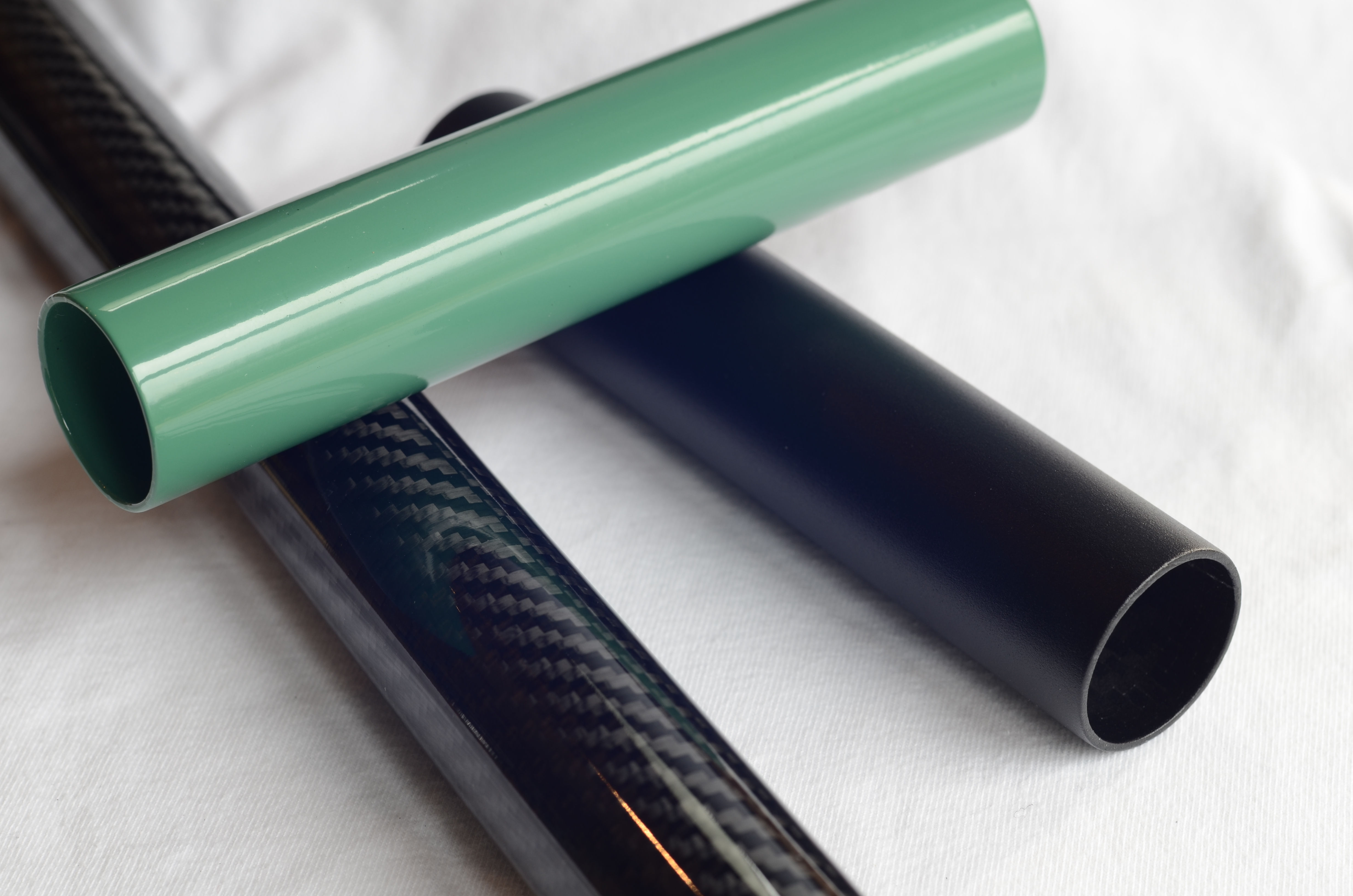In a world where chemicals surround us, protecting our cherished belongings and ensuring their longevity is of utmost importance. Enter powder coating, the guardian angel of surfaces, bestowing upon them not only impeccable aesthetics but also the impenetrable shield of chemical agent resistance. As technology advances, so does our understanding of the wonders of powder coating. From a mere layer of fine particles to an intricate defense mechanism against harsh chemical adversaries, let us embark on a captivating journey to unravel the mysteries of how powder coating works its enchantment on our cherished possessions, ensuring their eternal resilience. So fasten your seatbelts, ladies and gentlemen, as we delve into the fascinating realm where science meets artistry and safeguarding meets style – the captivating world of powder coating and its miraculous chemistry of resilience.
Table of Contents
- Understanding the Basics of Powder Coating for Chemical Agent Resistance
- Applying Powder Coating: Techniques and Considerations for Optimal Chemical Resistance
- Enhancing Durability and Protection: The Role of Pretreatment in Powder Coating
- Powder Coating Selection: Key Factors to Ensure Chemical Agent Resistance
- Q&A
- Final Thoughts

Understanding the Basics of Powder Coating for Chemical Agent Resistance
When it comes to protecting surfaces against chemical agents, powder coating is an exceptional solution that offers both durability and resistance. With its unique application process, powder coating provides a seamless and impenetrable barrier that effectively shields surfaces from corrosive substances. Here are a few essential points to grasp in order to understand the basics of this remarkable method:
- Powder formulation: A finely ground mixture of resins, pigments, and curing agents forms the powder coating. This blend is carefully formulated to ensure optimal chemical resistance, as well as excellent adhesion to various substrates.
- Electrostatic application: The powder coating is applied to the surface using an electrostatic charge. The charged particles adhere to the surface due to the electrostatic attraction, resulting in a uniform, thick, and protective layer.
- Curing process: After application, the coated surface is subjected to high temperatures in a curing oven. This heat activates the curing agents in the powder, causing a chemical reaction that bonds the particles together, creating a hardened and resilient finish.
Effective powder coating for chemical agent resistance requires a thorough understanding of these fundamentals. By selecting the appropriate powder formulation and ensuring proper application and curing, surfaces can achieve superior protection against a wide range of corrosive substances. This innovative method offers not only strength and longevity but also an aesthetically pleasing finish that can elevate any project to a new level of excellence.

Applying Powder Coating: Techniques and Considerations for Optimal Chemical Resistance
Techniques for Achieving Optimal Chemical Resistance
When it comes to applying powder coating to ensure exceptional chemical resistance, there are several techniques and considerations that should be taken into account. By following these recommendations, you can significantly enhance the durability and lifespan of your coated surfaces:
- Thorough Surface Preparation: Proper cleaning and surface preparation are crucial in achieving optimal chemical resistance. This involves removing any dirt, grease, or rust from the substrate before applying the powder coating. Additionally, using a suitable chemical cleaner helps remove any contaminants that can adversely affect the adhesion and performance of the coating.
- Proper Powder Application: To achieve the best chemical resistance, it is important to prioritize uniform and even powder application. Ensure that the powder is applied in the recommended thickness; excessive or insufficient coating thickness can affect the chemical resistance. By using advanced spray guns, electrostatic techniques, or other modern application methods, you can achieve a consistent and durable coating that exhibits excellent resistance to various chemicals.
- Appropriate Curing Process: The curing process plays a vital role in enhancing the chemical resistance of powder coatings. Following the manufacturer’s instructions for time and temperature during the curing process is essential. Proper curing ensures that the coating reaches its full potential regarding chemical resistance, adhesion, and overall durability.
By implementing these techniques and considering these factors, you can ensure that your powder coating offers exceptional chemical resistance, thus prolonging the life of your coated surfaces and protecting them from potentially harmful substances.

Enhancing Durability and Protection: The Role of Pretreatment in Powder Coating
In the world of coatings, powder coating stands out as a reliable and effective method to enhance the durability and protection of various surfaces. However, to achieve optimal results, the importance of pretreatment cannot be overstated. Pretreatment plays a crucial role in ensuring a seamless and long-lasting powder coating application.
So, what exactly is pretreatment and why is it so essential? Pretreatment involves a series of meticulously designed processes that prepare the surface for powder coating. It serves as the foundation for a successful coating application, guaranteeing excellent adhesion, corrosion resistance, and overall durability. Through a combination of cleaning, etching, and surface modification techniques, pretreatment ensures that the substrate is free from contaminants, rust, and other imperfections that could compromise the quality of the coating.
- Superior Adhesion: Proper pretreatment enhances the bonding of the powder coating to the surface, resulting in superior adhesion and reduced risk of peeling or chipping.
- Enhanced Corrosion Resistance: Pretreatment processes ensure that the surface is free from rust and corrosive agents, providing a protective barrier against moisture and environmental factors.
- Improved Aesthetics: By removing any imperfections and blemishes, pretreatment creates a smooth and clean surface, allowing the powder coating to achieve a flawless and professional finish.
- Extended Lifespan: The combination of excellent adhesion, corrosion resistance, and proper surface preparation results in a powder coating that can withstand the harshest conditions, leading to a longer lifespan for the coated object.
In conclusion, pretreatment plays a vital role in enhancing the durability and protection of powder coatings. It ensures optimal adhesion, corrosion resistance, and overall longevity. By investing in proper pretreatment techniques, you can achieve outstanding results and prolong the life of your powder-coated surfaces.

Powder Coating Selection: Key Factors to Ensure Chemical Agent Resistance
Factors to Consider for Chemical Agent Resistance in Powder Coating Selection:
When it comes to choosing the right powder coating that provides excellent chemical agent resistance, there are several key factors that need to be taken into account. Here are some important considerations to keep in mind:
- Chemical Compatibility: One of the foremost factors to ensure chemical agent resistance is to select a powder coating that is chemically compatible with the specific agents it may come into contact with. Conduct a thorough assessment of the chemicals involved and consult the powder coating manufacturer to ensure compatibility.
- Coating Thickness: The thickness of the powder coating plays a crucial role in resisting chemical attacks. Opt for a coating with adequate thickness to form a strong barrier against corrosive agents while maintaining proper adhesion to the substrate.
- Corrosion Resistance: Look for powder coatings that offer excellent corrosion resistance properties. These coatings are specifically formulated to withstand exposure to various chemicals and prevent rust or deterioration.
In addition to these key factors, there are a few more aspects to consider:
- Curing Process: Ensure the powder coating has been properly cured to maximize its chemical resistance. Proper curing ensures that the coating reaches its optimum properties, including enhanced resistance to chemical agents.
- Testing and Certifications: Look for powder coatings that have been tested and certified for their chemical resistance by reputable laboratories or industry organizations. These certifications provide assurance and confidence in the coating’s performance.
By considering these factors and making an informed decision, you can select a powder coating that not only enhances the aesthetics of your product but also provides robust chemical agent resistance, ensuring its longevity even in harsh environments.
Q&A
Q: How does powder coating provide resistance against chemical agents?
A: Powder coating acts as a protective shield against chemical agents by forming a durable, impenetrable barrier on the surface of the object. This barrier prevents the chemicals from coming into direct contact with the substrate, ensuring long-lasting resistance.
Q: What makes powder coating superior to other types of protective coatings when it comes to chemical agent resistance?
A: Powder coating exhibits exceptional resistance due to its unique application process. Unlike liquid coatings, powder coating is applied electrostatically, allowing for a more uniform and thicker coating. This results in better coverage and enhanced protection against chemical agents.
Q: Is powder coating effective for protecting different types of surfaces against chemical agents?
A: Absolutely! Powder coating is incredibly versatile and can be applied to a wide range of surfaces, including metal, wood, and plastic. No matter the material, powder coating forms a robust barrier that defends against the damaging effects of chemical agents.
Q: Can powder coating withstand harsh chemicals and corrosive substances?
A: Yes, indeed! Powder coating offers remarkable chemical resistance, making it highly suitable for environments where exposure to harsh chemicals and corrosive substances is quite common. It provides exceptional protection and helps prolong the lifespan of the coated object.
Q: Does powder coating require any additional maintenance or care to ensure its chemical agent resistance remains intact?
A: Generally, powder coating requires minimal maintenance to maintain its resistance against chemical agents. Regular cleaning with mild detergents or solvents is sufficient to keep the coating in optimal condition. However, severe chemical exposure or abrasion may require touch-ups or reapplication to ensure continued effectiveness.
Q: Are there any environmental benefits associated with powder coating in terms of chemical agent resistance?
A: Absolutely! Powder coating is an eco-friendly alternative to traditional liquid coatings. It contains no solvents or volatile organic compounds (VOCs), reducing harmful emissions and minimizing environmental impact. Moreover, its exceptional chemical resistance helps prevent chemical leaks or spills, contributing to a safer and cleaner environment.
Q: Are there any limitations or considerations when opting for powder coating for chemical agent resistance?
A: While powder coating offers numerous benefits, it is important to consider the specific requirements of your application. Some factors to consider include temperature resistance, UV stability, and the compatibility of the coating with the specific chemical agents it will be exposed to. Consulting with a professional powder coating provider will help ensure the best choice for your needs.
Q: Can powder coating be customized in terms of appearance while maintaining its chemical agent resistance?
A: Absolutely! Powder coating provides a wide range of colors, textures, and finishes, allowing for endless customization options. Whether you seek a vibrant color or a textured surface, powder coating can seamlessly incorporate the desired aesthetics while preserving its exceptional resistance to chemical agents.
Q: Is powder coating a cost-effective solution for chemical agent resistance?
A: Without a doubt! Despite its superior performance and long-lasting protection, powder coating remains a cost-effective solution in the long run. Its durability reduces the need for frequent repairs and maintenance, saving both time and money in the future.
Q: How does powder coating contribute to overall safety in various industries that deal with potentially dangerous chemical agents?
A: Powder coating plays a pivotal role in ensuring the safety of personnel and equipment in industries where chemical exposure is a concern. By providing reliable resistance against chemical agents, powder coating minimizes risks, prevents costly damages, and protects the well-being of individuals working in these environments.
In Summary
As we reach the end of our journey through the fascinating world of powder coating and its remarkable resistance against chemical agents, one thing becomes abundantly clear – science truly knows no bounds. From its humble beginnings as a mere aesthetic enhancement tool, powder coating has grown to be the ultimate guardian against the harsh forces of chemicals.
Through the intricate dance of particles, an invisible shield is formed, transforming ordinary surfaces into impenetrable fortresses. We have witnessed the remarkable efficiency of electrostatic attraction, as pigmented powder particles clung to metal surfaces with unwavering determination. Time and again, we marveled at the alchemical metamorphosis that occurred when these powders were subjected to heat, bonding into a formidable armor of durability and resilience.
Taking a closer look, we uncovered the secrets behind this extraordinary chemical resistance. It’s the meticulous selection of polymer resins that act as building blocks, blending strength and flexibility. Meanwhile, the curing process, akin to a ritualistic ceremony, solidifies the marriage between powdered pigments and the substrate, giving birth to an invincible synthesis.
In the face of formidable adversaries like corrosive acids, caustic solvents, and even the most aggressive chemical agents, powder coating remains unyielding. Its sacrificial nature, absorbing the impact of these chemical assaults, reflects an unwavering dedication to safeguarding the integrity of surfaces. It’s this valorous sacrifice that preserves the aesthetics, functionality, and longevity of objects, serving as a testament to powder coating’s unwavering loyalty.
But let us not forget the artisans whose skillful hands orchestrate this symphony of protection. Their profound understanding of both art and science is what guides them in selecting the perfect powder blend, meticulously fine-tuning the parameters, and applying the coatings with unwavering precision. They are the guardians of surfaces, the vanguards of modern aesthetics, and the champions of prolonged durability.
So, as we conclude this exploration into the realm of chemical resistance, we bid adieu to powder coating with a newfound appreciation for its extraordinary capabilities. From industrial applications to everyday objects, powder coating continues to redefine boundaries, turning mere surfaces into safeguarded masterpieces. Its versatility, durability, and chemical resilience make it the epitome of innovation, an alchemist’s dream, and a true champion in the realm of surface protection. Whether it be defense against corrosion or a shield against hostile chemicals, powder coating triumphs where others fall short, reminding us that in this chemical battle, it stands tall as the undefeated victor.


